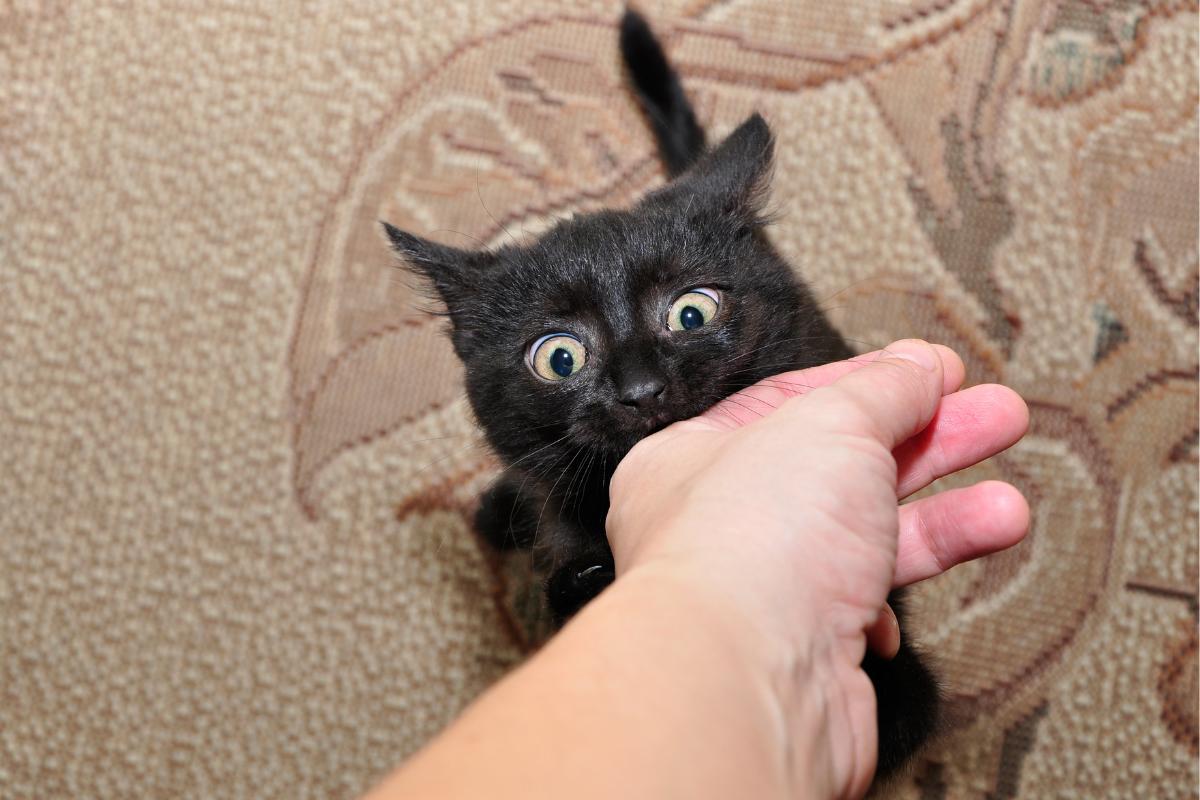How to Discipline a Cat Properly?



See files for Cats
Cats are known for being independent, intelligent, and sometimes a bit mischievous, which can make disciplining them seem like a challenge. Unlike dogs, cats don’t respond well to the more traditional training methods, so understanding how to guide their behavior requires a different approach. Effective discipline is not about punishment, but rather about teaching your cat what is acceptable and redirecting unwanted behaviors in a way that respects their natural instincts.
In this AnimalWised guide, we’ll explore how to discipline a cat properly, as well as practical tips for encouraging good behavior in your feline friend while maintaining a loving and positive relationship.
When to correct a cat’s behavior
It's important to address your cat's behavior immediately after it occurs. This helps them understand the connection between their actions and your response. This direct connection helps them understand the link between their behavior and your reaction.
Keep in mind that cats can't connect the dots between past actions and delayed scoldings. This can lead to confusion, stress, or even fear. Repeatedly scolding a cat for past behavior can harm your relationship and hinder their learning.
Instead of punishment, focus on positive reinforcement. Reward desired behaviors with treats, praise, or extra playtime. This helps your cat understand what you expect and encourages them to repeat positive actions. Punishment should be a last resort. Always prioritize positive reinforcement and seek professional advice if needed.
What makes a cat misbehave?
Behavioral changes in cats can often be linked to underlying health problems or environmental stressors. If you suspect your cat is stressed, try to identify potential stressors in their environment and make necessary changes. Creating a calm and comfortable environment can help reduce stress and improve behavior.
Additionally, some behaviors, like marking or mounting, might be due to hormonal issues. Neutering or spaying can often help alleviate these behaviors.
It's important to consult with a veterinarian to rule out any underlying health issues before addressing behavioral problems. A professional can provide tailored advice and guidance.
Learn more about how stress might be impacting your cat in this other article.

What is an appropriate punishment for a cat?
When discussing cat training, the term "punishment" often carries negative connotations. However, in this context, it refers to a specific training technique. It's important to differentiate between positive punishment (adding something unpleasant) and negative punishment (removing something desirable). Let us take a closer look at each type:
- Positive punishment, like yelling or hitting, is highly discouraged. It can cause fear, stress, and damage the bond between you and your cat. This type of punishment can be harmful to your cat's physical and mental well-being.
- Negative punishment, when used correctly, can be a helpful tool. It involves removing something your cat enjoys as a consequence of unwanted behavior. For example, if your cat bites during playtime, stopping the play session can help them understand that biting is unacceptable.
To ensure the effectiveness of this technique, consider the following:
- Timing is crucial: negative punishment should be applied immediately after the unwanted behavior.
- Avoid causing harm: always intervene calmly and safely to avoid causing your cat distress.
- Focus on positive reinforcement: reward desired behaviors to reinforce what you want your cat to do.
While negative punishment can be effective, it's essential to use it in conjunction with positive reinforcement. A balanced approach will help you train your cat effectively while maintaining a loving and harmonious relationship.
Do cats remember if you punish them?
Cats don't understand punishment in the same way humans do. They may not remember specific instances of being "punished" for a particular behavior, but they can form associations between certain actions and the consequences that follow, especially if those consequences are immediate and consistent.
Did you know that improper discipline could be one reason for litter box troubles? Find out more in our in-depth article.
How to discipline your cat when they misbehave
To train a cat effectively, it's essential to understand that discouraging inappropriate behavior is only the first step.
Preventing the behavior from recurring requires providing a suitable alternative that satisfies the cat's needs in a safe and acceptable way. Here’s how to approach this process:
1. Address the inappropriate behavior
Instead of using positive punishment, such as yelling or using physical force, you can convey disapproval with a firm but calm “NO” immediately after the unwanted behavior occurs.
This immediate response helps the cat understand that the behavior is not acceptable. In some cases, you can also use negative punishment by removing a pleasant stimulus. For example, if your cat is constantly jumping on the kitchen counter, you can use negative punishment to discourage this behavior. Place a double-sided sticky tape or a textured mat on the counter. When the cat jumps up and experiences the unpleasant sensation, they are less likely to repeat the behavior. This is an example of removing a desirable outcome (access to the counter) to deter the unwanted behavior.
2. Provide an appropriate alternative
Cats, no matter how intelligent, cannot intuitively understand what humans consider good or bad behavior. It’s our responsibility to teach them.
After indicating that a behavior is unacceptable, you need to show your cat the preferred behavior. Continuing with the biting example, after stopping play, redirect your cat’s attention to an appropriate object, such as a toy or a chew item, that it can bite safely.
3. Reinforce positive behavior
Whenever your cat exhibits the desired behavior, offer a reward to reinforce it. Positive reinforcement is far more effective than punishment, as it encourages your cat to repeat the desired behavior. Rewards can include treats, affection, or playtime.
It’s important to vary the types of rewards and gradually reduce the frequency as your cat learns, so the behavior becomes a habit rather than something it performs solely for a reward.
4. Avoid encouraging unwanted behavior
Start training your cat as early as possible, ideally from the time it arrives at your home. Early training helps cats quickly learn which behaviors are acceptable. Avoid encouraging behaviors in kittens that you wouldn’t want to see in adult cats, such as playing with hands instead of toys.
5. Create a stimulating environment
Many destructive behaviors in cats stem from a lack of mental and physical stimulation. Cats need an enriched environment that provides opportunities to expend energy and satisfy their instincts. Offer your cat a variety of toys, scratching posts, and interactive play sessions. This helps prevent boredom and promotes healthy, balanced behavior.
Want to learn more about positive reinforcement training for cats? Check out the video below.

If you want to read similar articles to How to Discipline a Cat Properly?, we recommend you visit our Behavioral problems category.






